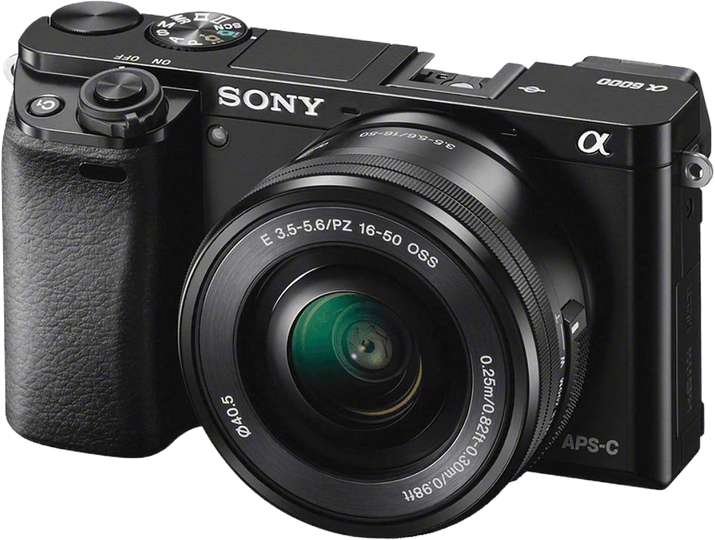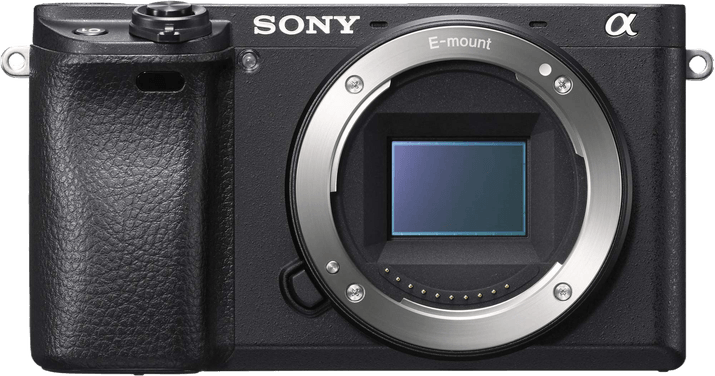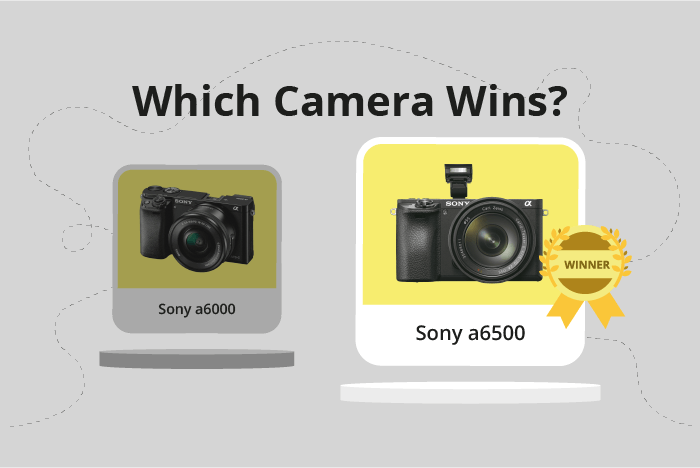Sony a6000 vs a6500 Comparison
Sony a6000

Sony a6500

The Sony a6500 emerges as the winner with a score of 72/100, while the Sony a6000 scores 57/100. Both cameras are mirrorless and share the same dimensions of 120 x 67mm. However, the a6500 is slightly deeper at 53mm compared to the a6000’s 45mm. The a6500 is also heavier, weighing 453g, whereas the a6000 is lighter at 344g.
The a6500’s higher score suggests a better overall performance. Launched in 2016 with a price of $1400, it is the more recent and expensive model. On the other hand, the a6000, released in 2014, has a lower launch price of $799, making it a more affordable option.
Considering the specifications and scores, the Sony a6500 is the superior camera. However, the Sony a6000 remains a viable choice for those seeking a more budget-friendly option.
Sony a6000 vs a6500 Overview and Optics
The Sony a6500 emerges as the winner in the optics comparison, with a score of 74/100, while the Sony a6000 trails behind with a score of 67/100. Both cameras share several specifications, such as the 24-megapixel count, 11 frames per second shooting speed, CMOS sensor type, Bionz X processor, APS-C sensor size, and the Sony E lens mount.
The a6500’s superiority is evident in its DXOMARK sensor score of 85 compared to the a6000’s score of 82. This score difference shows that the a6500 has better image quality and color depth. Additionally, the a6500 is equipped with image stabilization, which the a6000 lacks. This feature helps reduce camera shake and results in sharper images, especially in low light conditions or when using longer focal lengths.
On the other hand, the a6000’s advantage over the a6500 is minimal, with the only notable difference being the 0.1-megapixel count advantage. However, this difference is negligible and does not significantly impact image quality.
Taking these factors into consideration, the Sony a6500 clearly outperforms the a6000 in terms of optics. Its higher DXOMARK sensor score and the presence of image stabilization make it a more reliable choice for photographers seeking better image quality and stability. The a6000, while still a good option, does not offer any significant advantages over the a6500 in this comparison. Thus, for those seeking superior optics, the Sony a6500 is the recommended choice.
Sony a6000 vs a6500 Video Performance
The Sony a6500 outperforms the Sony a6000 in video capabilities, with a video score of 77/100 compared to the a6000’s 56/100. Despite this difference, both cameras share some common specifications.
Both the Sony a6000 and a6500 lack built-in time-lapse functionality. However, the similarities end there. The a6500 surpasses the a6000 in terms of video quality, offering 4K resolution (3840 x 2160) compared to the a6000’s Full HD (1920 x 1080). This means that the a6500 can capture more detail and produce higher-quality videos. Additionally, the a6500 has a maximum video frame rate of 120fps, double that of the a6000’s 60fps. This allows the a6500 to record smoother slow-motion footage and provide more flexibility in post-production.
The Sony a6000, on the other hand, is not without its merits. Although its video capabilities are inferior to the a6500, it still offers Full HD resolution, which is sufficient for many users’ needs. Its lower video score is not a major disadvantage for those who prioritize still photography over videography.
To conclude, the Sony a6500 is the clear winner in terms of video capabilities. Its 4K resolution and higher frame rate make it a superior choice for videographers and those seeking higher quality footage. The Sony a6000, while not as advanced in this aspect, remains a solid option for users who prioritize still photography and do not require the advanced video features offered by the a6500.
Sony a6000 vs a6500 Features and Benefits
The Sony a6500 emerges as the winner in the features comparison, scoring 81/100, while the Sony a6000 lags behind at 41/100. Both cameras share some common specifications, such as a 3-inch screen size, 921600-dot screen resolution, flip screen, absence of GPS, and WIFI connectivity. However, there are also key differences that set the a6500 apart.
The a6500 surpasses the a6000 with its touchscreen capability, which allows for more intuitive control and faster navigation through menus. This feature proves to be beneficial in various shooting scenarios, such as adjusting focus points and settings on the fly. Moreover, the a6500 also boasts Bluetooth connectivity, making it easier to pair with compatible devices for remote control and image transfer.
On the other hand, the a6000 does not offer any significant advantages over the a6500 in terms of features, as it lacks both touchscreen and Bluetooth. Its lower score reflects this difference.
Taking these points into consideration, the Sony a6500 clearly outperforms the a6000 in the features department. The inclusion of a touchscreen and Bluetooth connectivity enhances user experience and convenience, making it a more versatile and practical choice for photographers. Although the a6000 shares some specifications with the a6500, it falls short in offering additional benefits that could justify its preference over the a6500. Thus, the Sony a6500 stands as the better option between the two cameras in terms of features.
Sony a6000 vs a6500 Storage and Battery
The Sony a6000 and Sony a6500 tie in storage and battery with a score of 21/100. Both cameras have one memory card slot and accept SD/SDHC/SDXC and Memory Stick Pro Duo cards for storage. Neither camera offers USB charging, and they both use the NP-FW50 battery type.
The Sony a6000 has a slight advantage in battery life, providing 360 shots compared to the a6500’s 350 shots. This difference may not be significant for casual users, but it could be crucial for photographers who require extended battery life during long shooting sessions.
On the other hand, the Sony a6500 does not have any specific advantages in storage and battery compared to the a6000. Both cameras share the same storage capacities and battery type, making them equal in this aspect.
Therefore, the Sony a6000 is slightly better in terms of battery life, while both cameras are on par with each other regarding storage capabilities. Users can confidently choose either camera, knowing that their storage and battery needs will be adequately met.
Sony a6000 vs a6500 – Our Verdict
Are you still undecided about which camera is right for you? Have a look at these popular comparisons that feature the Sony a6000 or the Sony a6500:

